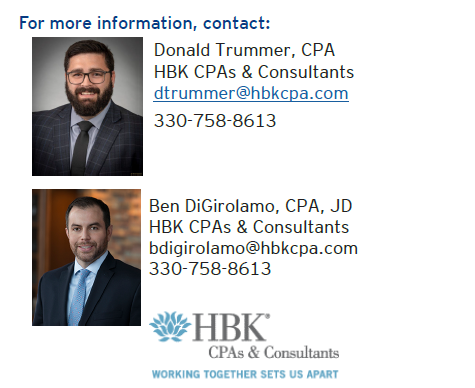 The 2017 Tax Cuts and Jobs Act (TCJA) amended §1031 like-kind exchanges to restrict the applicability to real property, but as with other TCJA provisions the changes created more questions than solutions and additional guidance was needed. On December 2, 2020, the IRS and Treasury Department issued the final regulation for §1031 (TD 9935) which provides a definition and how to address personal property that is incidental to the exchange. The final regulations also specify that the definition below is only intended for use in §1031.
The 2017 Tax Cuts and Jobs Act (TCJA) amended §1031 like-kind exchanges to restrict the applicability to real property, but as with other TCJA provisions the changes created more questions than solutions and additional guidance was needed. On December 2, 2020, the IRS and Treasury Department issued the final regulation for §1031 (TD 9935) which provides a definition and how to address personal property that is incidental to the exchange. The final regulations also specify that the definition below is only intended for use in §1031.
Download Printable Article (PDF) >>>
What is Real Property?
Real Property in its simplest form it has been historically defined as land and anything permanently attached to the land, such as buildings. Everything else that is not permanently attached generally fell under personal property. For those that are visual learners, think of it as if you could pick up a building and shake it; everything that falls out is personal property and the remaining structure is real property. “Under the final regulations, for purposes of §1031 it is classified as (i) so classified under the state and local law test, subject to certain exceptions, (ii) specifically listed as real property in the final regulations, or (iii) considered real property based on all the fact and circumstances under the various factors provided in the final regulations.”
State and Local Law Test
While the final regulations allow for state and local law to determine whether a property is real property, there are a couple of tests that the property needs to pass. The first is that the state or local law must classify the property being exchanged as such on the date of the exchange. The second being that the property must have a property that qualified as eligible like-kind exchange property under the pre-TCJA changes. The following examples of excluded assets were listed in the final regulations: stocks, bonds, notes, partnership interest, certificates of trusts or beneficial interests, or choices in action.
Specific Assets Test
The second classification is five classes of assets that are specifically included as eligible §1031 assets. The five categories are land, improvements to land, unsevered natural products of the land, water and air superjacent to land, and certain intangible interests in real property. Of these five categories, the final regulations expand on three to provide additional examples and guidance. Those three categories are improvements to land, unsevered natural products of the land, and intangible interest in real property.
Improvements to land are generally defined as inherently permanent structures and the structural components of inherently permanent structures. Inherently permanent structures are distinct assets that have been permanently affixed to land for an indefinite period of time. Examples include buildings, roads, parking areas, fences, utility structures, and storage containers. The following factors can be used as guidance to determine any other assets that qualify as an inherently permanent structure:
1. The manner in which the distinct asset is affixed to real property.
2. Whether the distinct asset is designed to be removed or to remain in place.
3. The damage that removal of the distinct asset would cause to the item itself or to the real property to which it is affixed.
4. Any circumstances that suggest the expected period of affixation is not indefinite.
5. The time and expense required to move the distinct asset.
Structural components are generally defined as any distinct asset that is a part of and integrated into, an inherently permanent structure. Examples of structural components include utility lines, HVAC equipment, elevators and escalators, fire and security systems, walls, ceilings, and floors. The following factors can be used as guidance to determine any other assets that qualify as a structural component:
1. The manner, time, and expense of installing and removing the component.
2. Whether the component is designed to be moved.
3. The damage that removal of the component would cause to the item itself or the inherently permanent structure to which it is affixed.
4. Whether the component is installed during the construction of the inherently permanent structure.
Unsevered natural products of land include growing crops, plants, timber, mines, wells, and natural deposits. Natural products cease to be real property once they are severed or removed from the land. Intangible interests included in the final regulations include stock in a cooperative housing corporation, easement, development rights, or other similar rights.

Facts and Circumstances
The third classification is determined by evaluating the facts and circumstances of the separately identifiable asset and applying the following factors:
1. Whether the item is customarily sold or acquired as a single unit rather than as a component part of a larger asset.
2. Whether the item can be separated from a larger asset, and if so, the cost of separating the item from the larger asset.
3. Whether the item is commonly viewed as serving a useful function independent of a larger asset of which is a part.
4. Whether separating the item from a larger asset of which is a part impairs the functionality of the larger asset.
Incidental Personal Property
There are a couple of tests In addition to the property listed above, that qualifies as real property, the final regulations provided guidance for when personal property is included with the property being exchanged. In determining whether personal property qualifies as incidental to the exchange, there is a two-part test. The first part is that the property is typically transferred together in a standard commercial transaction. The second part is that the fair market value of the incidental property cannot exceed 15% of the aggregate fair market value of the larger item of the property. The inclusion of the incidental personal property in the final regulations was not intended to indicate that personal property qualifies as like-kind property eligible for deferral under §1031, but rather that the inclusion of incidental amounts of personal property does not disqualify the entire exchange from deferral. All personal property received as part of the exchange will create a recognized gain or loss.
Conclusion
With the pre-TCJA regulations, the main focus of §1031 exchanges was to ensure that replacement property was identified within 45 days of selling the relinquished property and that the property was replaced within 180 days from the sale with a property with an equal or greater FMV to qualify for full deferral. With the final changes to the §1031 regulations, it will require additional due diligence on behalf of taxpayers and advisors alike to correctly structure deals to minimize gain recognition. This will involve ensuring that real property is properly identified, and personal property is kept to minimal levels or separated into a separate transaction.
About the Authors
Donald Trummer, CPA
 Donald is a Senior Manager in HBK’s Youngstown, Ohio office and has been with the firm since November 2020. Currently, Donald is a member of HBK’s Tax Advisory Group. He has over 8 years of experience in public accounting, mainly specializing in pass-through entity and individual taxation. Donald can be reached at (330) 758-8613 or by email at dtrummer@hbkcpa.com.
Donald is a Senior Manager in HBK’s Youngstown, Ohio office and has been with the firm since November 2020. Currently, Donald is a member of HBK’s Tax Advisory Group. He has over 8 years of experience in public accounting, mainly specializing in pass-through entity and individual taxation. Donald can be reached at (330) 758-8613 or by email at dtrummer@hbkcpa.com.
Ben DiGirolamo, CPA, JD
Ben DiGirolamo is a Principal in the HBK Tax Advisory Group and works in the Youngstown, Ohio office. He has been with the firm since 2009 and focuses on entity tax issues, entity planning and flow-through taxation. Ben can be reached at 330-758-8613 or by email at bdigirolamo@hbkcpa.com.
About HBK CPAs & Consultants
HBK is a multidisciplinary financial services firm, offering the collective intelligence of professionals committed to delivering exceptional client service across a wide range of tax, accounting, audit, business advisory, valuation, financial planning, wealth management and support services from offices in Pennsylvania, Ohio, New Jersey, New York and Florida.
About WCRE
WCRE has been operating in Southern New Jersey and the Greater Philadelphia area since 2012. WCRE is a full-service commercial real estate brokerage and advisory firm specializing in office, retail, medical, industrial and investment properties in Southern New Jersey and the Philadelphia region.
WCRE’s South Jersey headquarters can be reached at 856-857-6300 and inquiries for the PA offices in both Philadelphia and King of Prussia may be directed to 215-799-6900.


